Happy Hunt-ing, Part 2
Last week, I talked about how Innistrad: Midnight Hunt mechanically captured the feel of the Werewolves. Today, I'm going to talk about all the other mechanical aspects of the set and introduce you to both the Vision Design and Set Design teams. Plus, before this column is over, I have a cool new preview card to show you, something for the Zombie fans out there.
The Monster Squad
To introduce design teams, I have the team lead do the introductions. First up, Ethan Fleischer is going to introduce the Innistrad: Midnight Hunt Vision Design team.
-
Click here to meet the Vision Design team
-
Ethan Fleischer (vision lead)
I've been designing Magic sets for about ten years now, including recent sets like Kaldheim and Modern Horizons 2. I brought my love of classic film to bear on this, the sixth set on Innistrad. If you think you see a reference to German expressionism in there somewhere, it's really there. I think my favorite actor has got to be Lon Chaney Jr.; there's just something so sympathetic about the roles he plays.
Doug Beyer (creative lead)
Doug is the creative director for Magic, but he's an accomplished game designer as well. One of his recent brainchildren was Jumpstart. Doug took the ideas that the Vision Design team had and transformed them into an exciting storyline, which influenced the worldbuilding of the set. Doug is always great to work with, but sometimes his breath smells like raw meat.
George Fan (designer emeritus)
George is a game designer with some impressive credits under his belt, including Plants vs. Zombies and Octogeddon. He took a contract position to design Magic with us for twelve months, bringing a lot of exciting new ideas to the teams he was on. George is one of the sweetest guys I have ever met. Every few weeks, he practically begged us to lock him into one of the conference rooms; "For your own safety," he said. How considerate is that?
Ari Nieh
Ari was the winner of the Great Designer Search 3 and has quickly risen to leading design teams of her own, which you all will get to see before too much more time has passed. Ari's solid understanding of design principles and Magic's best practices served her well on Innistrad: Midnight Hunt's Vision Design team. However, whenever someone would suggest a multirole card design that would serve as a "silver bullet" to solve several problems as once, Ari would wince and look decidedly uncomfortable. I have no idea what that was all about.
James Rose
During the day, James works on the MTG Arena team as a user experience designer. During the night, he is one of Magic design's best-kept secrets. He has become one of my go-to designers to have on my teams. His schedule was always a bit erratic, though; every full moon, he would spend his nights roaming the moors. Managing these kinds of quirks is all part of leading a team of creative people.
Mark Rosewater
Mark is the head designer for all of Magic. His experience leading vision design for the original Innistrad and his general media savviness made him an invaluable addition to the team. Normally, Mark wears a different tee shirt every day, and each week had a theme that we'd try to guess. Once or twice a month, Mark shows up at work looking exhausted, wearing nothing but a pair of ragged pants. This makes guessing the theme for that week especially challenging.
James Wyatt (creative lead emeritus)
James currently works on Dungeons & Dragons, but during Innistrad: Midnight Hunt's vision design, he was a member of Magic's Worldbuilding team. James is a longtime veteran writer of tabletop games. He ushered Innistrad: Midnight Hunt's worldbuilding through the early stages before handing the reigns over to Doug Beyer. James's mane of hair is barely restrained, and he usually has a lupine gleam in his eyes, but I'm sure there's nothing suspicious about that.
Next up, Ian Duke introduces his Set Design team.
-
Click here to meet the Set Design team
-
Ian Duke (co-set lead)
Innistrad: Midnight Hunt marks my first set design lead role in a few years, so, naturally, I'm super excited for its release. I previously lead Oath of the Gatewatch, Kaladesh, and Hour of Devastation (as well as several non-Standard releases) before taking a hiatus to help spin up the Play Design team as its initial technical lead. During that time, I also served as a strong second experienced designer for the leads of Dominaria, Guilds of Ravnica, War of the Spark, Throne of Eldraine, Theros Beyond Death, and Zendikar Rising, so I managed to keep from becoming rusty on the card design front. I've traditionally specialized in working on game balance and format health, and that experience and skillset translates well to many of the tasks a design lead needs to manage.
Erik Lauer (co-set lead)
Erik and I were co-leads for Innistrad: Midnight Hunt, with Erik receiving the vision design handoff from Ethan and leading the first half of set design while I led the final portion. Erik is one of our most seasoned and skilled design leads, with over a decade of experience. He is uniquely talented at the structural portion of set design, making sure that the set themes and mechanics play well and complement each other to create a cohesive whole. Erik's work paved the way for the second half of set design very well, as most of the foundation that Erik set in place held through to the final product.
Mark Gottlieb
Another experienced veteran, Mark Gottlieb stands out as one of the best designers at coming up with novel mechanics and individual card designs. Mark contributed a tremendous number of designs that made it into the final set. He was a great help as a strong second to me once Erik handed off, as Mark's intuition for what makes an awesome Magic set and ability to keep designs simple and elegant always kept us on course. I'd worked closely with Mark recently on Theros Beyond Death, and he's always one of my favorite people to be on a design team with.
Ari Nieh
Ari's work on the set predated my taking over as lead, but we did have a bit of overlap working together as Set Design team members. Ari did great work helping to fill out the early card file as the team experimented with themes and mechanics. As the person in charge of white's color pie, Ari was a great resource for the me and team during a time when the studio was actively trying to expand white's portion of the color pie and its power level in various formats.
Reggie Valk
One of the newer folks among the Studio X designers (at least at the time of our work on Innistrad: Midnight Hunt), Reggie brought a fresh perspective as a Magic mega-fan just coming in from the "wilds" of outside Wizards's walls. He's one of the most passionate designers I've had the pleasure of working with and contributed many card designs that made it into the final file. Reggie joined the Innistrad: Midnight Hunt team before I did and ended up being the Set Design team member with the longest continuous involvement. He was great at filling me in with why earlier decisions had been made and what alternatives had been tested so we could move forward without slipping into previous pitfalls.
Melissa DeTora
For most of my stretch as set lead, Melissa was our resident play designer, assigned to specialize in game balance aspects of set design. In addition to helping us tweak and tune numbers and power level, she also contributed numerous card designs. Melissa has a great knack for identifying which cards and play patterns are fun and which are not, helping us weed out card designs that were trading off too much fun for the sake of novelty or cleverness.
Michael Majors
Before Melissa joined the team, Michael was the play designer assisting Erik during the earlier portions of set design. While I wouldn't end up working with Michael directly on the set until the Standard testing stages, his early file comments and balance work set up the set for a great handoff from Erik to myself. Michael is one of our most experienced play designers at working on various Constructed formats, and he helped ensure the set had plenty of great well-balanced designs for Standard, Modern, Commander, and beyond.
Andrew Brown
Andrew is my successor as play design technical lead, and these days, he often hops on each Set Design team toward the end of the process to help shepherd it into our Standard format playtesting process, otherwise known as "Future Future League" (FFL). Andrew and I worked closely together to balance the card file for both competitive and casual play alike. He also set the full force of the Play Design team to work on playtesting the Limited format, especially Booster Draft, to give the set one final round of balance and polish.
John Penick
John is a designer with strong game-balance skills who had worked on and off with the Play Design team as well as on a variety of other game projects. He joined us toward the end of set design as part of a cross-disciplinary exchange. I greatly appreciated having John's fresh perspective and game-balance experience, and he helped us with many of the finishing touches.
Making Monsters
While Werewolves are the focus of this set, it's still Innistrad, which means there are four other major creature types to care about.
Zombies
One of the challenges of designing Zombies on Innistrad is our desire to capture the pop culture feel of Zombies. In movies and on television, Zombies aren't particularly scary in the singular. They're not that fast, they're not that smart. If you're prepared for them and you know how to kill them, it's not that difficult to deal with a single zombie. What makes Zombies scary is that there's never just one. There's always a horde of Zombies that follow the first one you encounter, and there are only so many you can fight before they overwhelm you. We've always tried to capture that feel in Innistrad sets, that it's the horde that's going to kill you.
During Innistrad: Crimson Vow vision design, we decided to explore what other resources might be available to capture this feeling. We looked at Zombie creature tokens, always 2/2 black Zombies, and asked if there was another way to use them. Some of my favorite Zombie cards from original Innistrad allowed you to acquire a large amount of Zombie creature tokens to overrun the opponent, but it wasn't the kind of thing we could do easily at low rarities. Was there a way to create a Zombie horde at common and uncommon? That was the task we set out to solve.
We started by asking if we could just do more Zombie creature token creation at low rarities. What if there were spells that created a Zombie as an add-on to the spell—it was a creature that came with a Zombie creature token or an instant or sorcery that made one in addition to its effect. The problem was that we'd locked in Zombies as being 2/2 creature tokens (and that started long before original Innistrad), and it was too big of an effect to add on without significantly raising the mana cost of the spells. That's when we came up with a novel idea. What if we gave the Zombie tokens a downside to make them weaker to allow us to include them on spells?
The biggest problem tokens create is that they gum up the board and keep the opponent's creatures from attacking. Okay, we'll add "can't block." We tried that, and it was still too good. We then asked ourselves what kind of play pattern we wanted. We liked the idea of slowly building up your Zombie army and winning the game by attacking with a horde. That was exactly the flavor we wanted to capture. That led us to the drawback "when it attacks, sacrifice it at the end of combat." The idea was that each Zombie token basically had one attack. You wanted to save it until it was the right time to use it. Playtesting showed us that sometimes it was in a horde but that at other times it was finding an opportunity when you can get through. This way, your opponent had to treat the Zombie creature tokens as a potential threat.
During development, they ended up keywording that ability as decayed. Now I realize that drawback mechanics aren't historically popular, so it's easy to say, why should I be excited for creature tokens that are way worse than normal? Because it allows us to give them to you at a much cheaper cost and it creates a new play pattern that's very interesting. Much of the team was skeptical at first, but as we played them, everyone fell in love with them because they're flavorful and impactful in a way that's not always obvious at first blush. They ended up being so popular in R&D, in fact, that the Innistrad: Midnight Hunt Set Design team decided to move forward with the mechanic. (Set Design teams can use future mechanics as needed because the future design team has more time to find a replacement.) Every Zombie creature token in the set has decayed. I know this mechanic is probably going to create some skepticism at first glance, but I promise you, it plays well.
Before I move on, my preview card today is a card that uses decayed. Click below to see Tainted Adversary.
-
Click here to see Tainted Adversary
-
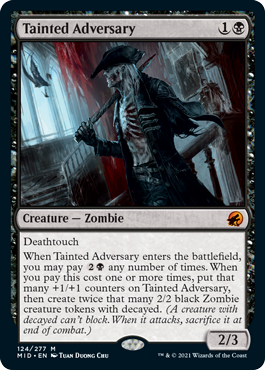
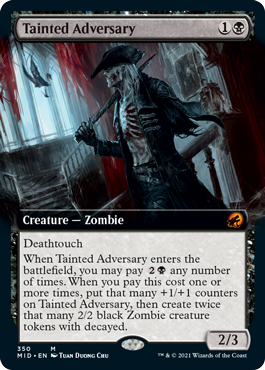
Tainted Adversary is part of a mythic rare cycle of creatures, each with a keyword and the ability to pay mana as an enters-the-battlefield effect to create both +1/+1 counters on the creature and another in-color effect.
Spirits
Two weeks ago, I showed you the design handoff document from original Innistrad, and in the article, I noted that I felt Spirits deserved more of a mechanical identity than they received. Innistrad: Midnight Hunt does not suffer from that problem. In fact, we gave them a whole new mechanic. Let me explain how it happened.
While trying to figure out how best to make use of transforming double-faced cards (TDFCs), we explored other facets of how we could use them to represent transformation. Part of this exploration was to look at each of the five main creature types and figure out what kind of transformation made the best flavor sense. For Spirits, the thing that stood out was that they didn't start out as Spirits. At one point, they were alive, but when they died, they became Spirits. That's a cool transformation. The earliest version of this involved creatures with a death trigger that put them back on the battlefield transformed. It turned out that having a creature die into another creature was strong, so we ended up making cards that looked very weak. That's when we thought about the aftermath mechanic from Amonkhet block, where you played the card as one spell from your hand but as a different spell from your graveyard. What if we combined aftermath with flashback to make cards that could be cast as one creature from your hand and a different creature, always a Spirit, from your graveyard.
This led us to create a mechanic, what we called disturb, that allowed you to cast the card from the graveyard and have it enter the battlefield transformed. As this was the Spirit mechanic that was trying to capture the transformation I talked about above, the front side is always a living creature, usually a Human, and the backside is always a Spirit. This way, you get the flavor of things dying and then returning as Spirits. The flavor was great, and it allowed us to use TDFCs in a new way. I do want to mention two other things. One, not every Spirit in the set has disturb, but the majority do. Two, the Vision Design team created a different mechanic for the Spirits, but when Innistrad: Midnight Hunt took the decayed Zombie creature tokens from Innistrad: Crimson Vow, they traded them the Spirit mechanic (as each made more mechanical sense in the other set). I'll talk about that Spirit mechanic when I do my Innistrad: Crimson Vow preview articles.
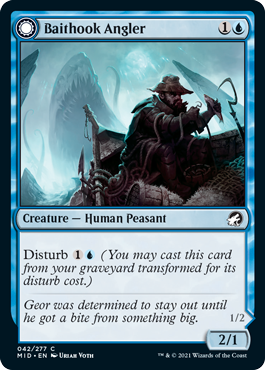
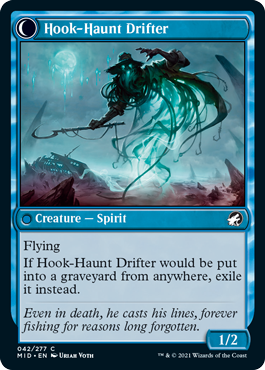
Humans
As is most often the case, things aren't going so well for the Humans of Innistrad. Oddly, being surrounded by monsters isn't the safest thing. Some of the Humans have turned to witchcraft to protect themselves from the monsters (in particular, the Werewolves in the story), and we wanted to find a mechanic to capture the flavor of witchcraft. To do their witchcraft, the Humans have banded together at an event called the Harvesttide.
Since original Innistrad, the Humans' two biggest strengths have been their willingness to work together and their adaptability. We were hoping the witchcraft mechanic could play both these up. The first version we tried was a kicker-like mechanic where you could tap three creatures to enhance the spell. Tapping creatures ended up being too much of a cost, so we tried to approach the problem from a different vantage point. What if the spell just required three creatures, sort of a creature version of metalcraft from Scars of Mirrodin (which was a threshold mechanic that required three artifacts). That ended up being a little too easy. What if you had to have three creatures but they had to have something in common?
Sharing the same creature type? It was already the Human mechanic, so that wasn't really asking for enough.
Sharing the same mana value? It seemed like an odd thing to care about and wasn't particularly flavorful.
Sharing the same power? This one was a little more interesting but was too easily solved with 1/1 creature tokens.
That's when the design team decided to flip the requirement. What if instead of sharing the same power, you had to have three creatures each with a different power? This was a task that was a little more complicated, so it couldn't be done too easily but was doable enough that it could be accomplished. The ability ended up being called coven. It mostly went on creatures but was also able to go on other card types. (Non-creature spells get a little more of a boost, as the creature gives you one of the three creatures you need.)
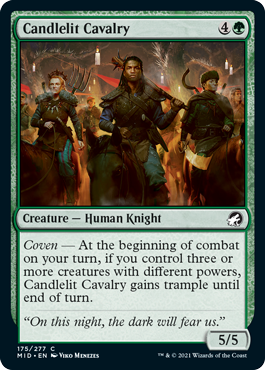
Vampires
Innistrad: Crimson Vow is to Vampires what Innistrad: Midnight Hunt is to Werewolves, so of all the tribes in the set, Vampires was the one we were least worried about. The next set was going to have lots of goodies for the Vampire fans. Innistrad: Midnight Hunt was still going to have Vampires as a viable Draft archetype/Constructed deck theme, so we wanted to make sure they had a mechanical identity; it just didn't need to be a named mechanic. What we ended up with was a theme. Many of the Vampires have triggers that care about if your opponent has lost life during your turn. This could come from damaging them with creatures or spells, something black and red can do. It also plays nicely with Vampires from other sets.
Devils
Innistrad was the first set to have multiple Devils in it. Innistrad: Midnight Hunt has two Devil cards and one card that creates Devil tokens (and yes, they're 1/1s that deal 1 damage to any target when they die).
And the Rest
Part of returning to a world for the third time is that there are some expectations to meet, and the design teams worked hard to fit in as much as they could. Here are some returning things in Innistrad: Midnight Hunt.
Flashback
Flashback first premiered in Odyssey but was a big part of the success of original Innistrad. While our second return to the plane didn't include them, we decided our third visit should. (And yes, this is why they weren't in Strixhaven.) There are a whole bunch of new flashback cards.
Curses
Innistrad introduced Curses, Auras that enchanted players and gave them negative abilities. Innistrad: Midnight Hunt has four new ones.
Transformation
Transforming double-faced cards are a staple of Innistrad sets (well, other than Avacyn Restored), so obviously Innistrad: Midnight Hunt has a bunch. In fact, two cards in every Innistrad: Midnight Hunt booster should be TDFCs. And yes, most of them have daybound/nightbound or disturb, but there are a number of other cards that transform in different ways.
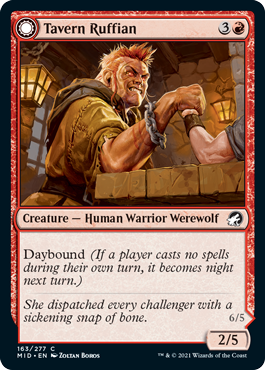
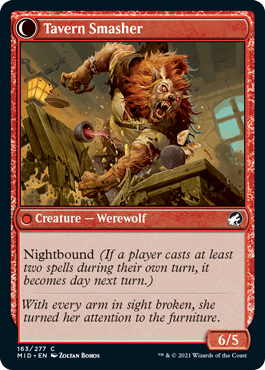
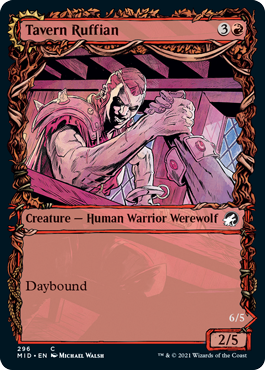
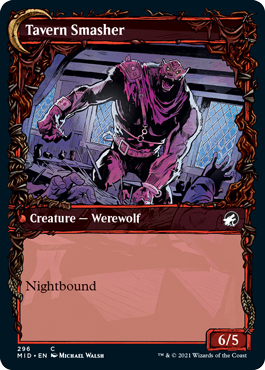
The Graveyard
What would a gothic horror plane be without a lot of references to the graveyard? It's been a staple of previous visits to Innistrad, and this time is no exception. In addition to flashback and disturb (two mechanics that work in the graveyard), there are a lot of other individual cards that reference it in various ways.
Investigate
Investigate (and Clues) was a popular mechanic from Shadows over Innistrad, so we've included five new ones.
The Number Thirteen
Thirteen is a superstitiously unlucky number, so Innistrad sets like to make use of the number in rules text. Three different cards reference the number thirteen.
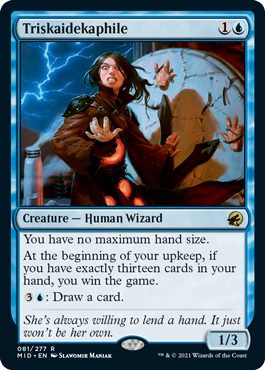
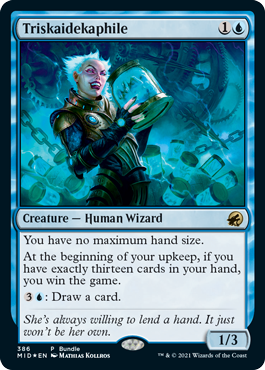
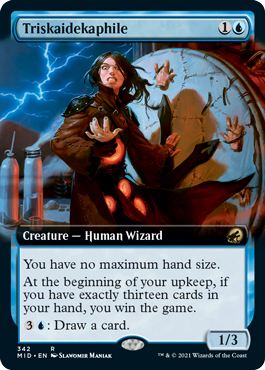
The Hunt Is Just Beginning
And that is everything non-Werewolf-related mechanic in Innistrad: Midnight Hunt. As always, I'm eager to hear your feedback on today's column or the set in general. You can email me or contact me through any of my social media accounts (Twitter, Tumblr, Instagram, and TikTok).
Join me next week for card-by-card design stories from Innistrad: Midnight Hunt.
Until then, may you find the element of Innistrad that you most enjoy.
- Episode 864 Equipment, Part 1
- Episode 863 Shards of Alara with Devin Low
- Episode 862 Obsoleted Things

